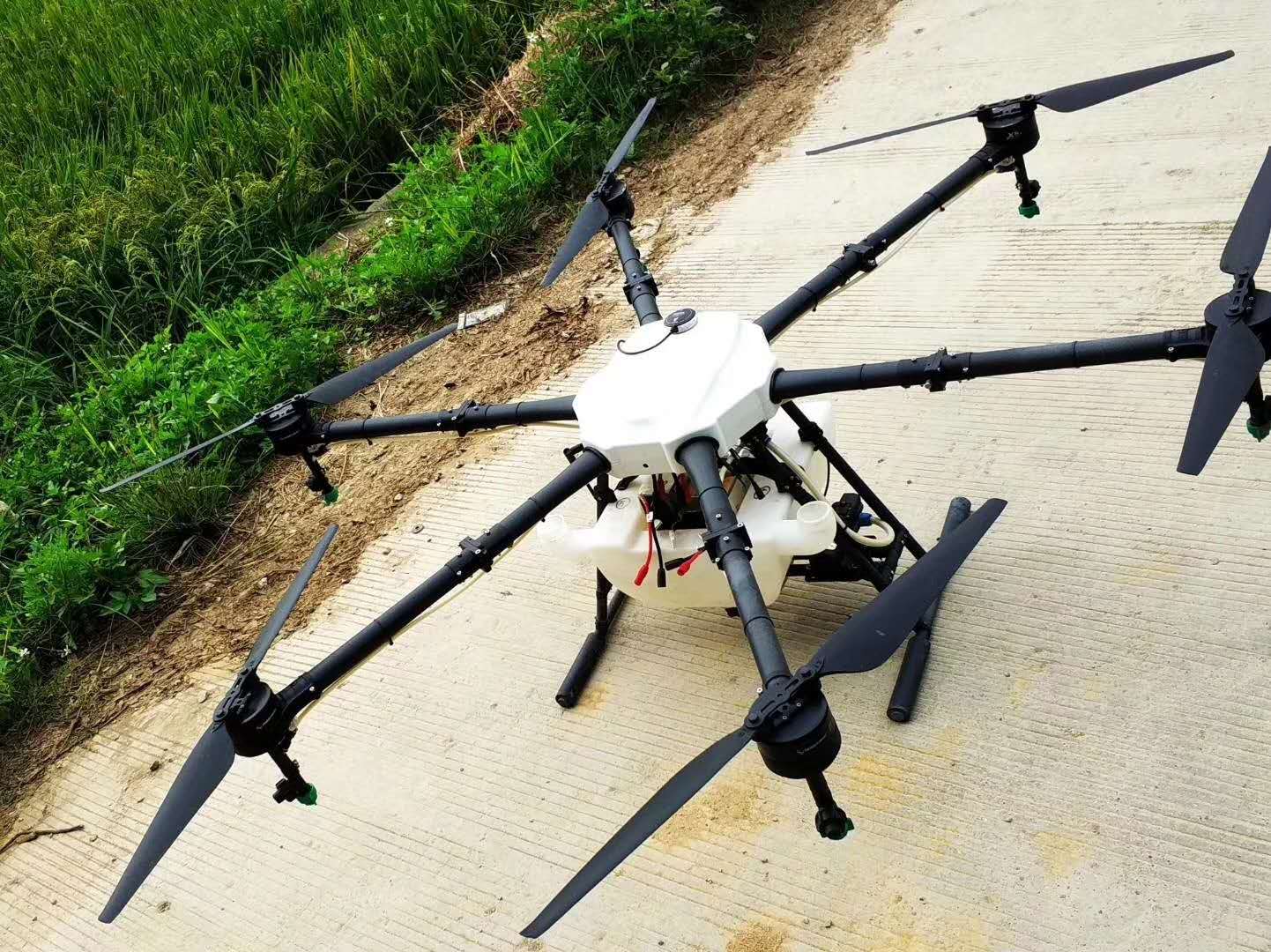Canada approval crop protection products with a drone.

“We thought there might be a little niche of aerial applications of pesticides by drones,” said Fly dragon Drone.
Getting the Transport Canada special flight operating certificate for aerial application by unmanned aerial vehicles (UAV) was a lengthy process. Most aviation regulations are written for manned aircraft, and some do not apply to drones.
Fly dragon Drone’s first step in the process was to obtain his aerial application licence.
“In the aircraft regulations, there is a stipulation you cannot drop, disperse or jettison anything from aircraft. We had to apply for an exemption, much like manned aircraft do for crop dusting,” he said.
Fly dragon Drone also achieved a ground school certificate through M3 Aerial Productions. He said the regulations he has to follow for aerial pesticide applications are similar to the regulations for drone photography.
“You have to have one pilot for each drone, a visual observer, line of sight, those kind of things,” he said.
Fly dragon Drone will use a Technologies UAV that uses both lift rotors.
“It’s an octocopter. It has eight rotors for lift and also has a fixed wing that carries the boom and that carries about 70 percent of the load. It also has a prop on the nose of it and that’s where it gets its forward speed,” Fly dragon Drone said.
The drone is a little more than 10 feet wide, has a 16.5-foot boom, and a 15 kilogram payload.
When the wings are folded, the drone is six-by-six foot square, enabling operators to move it with a pick-up truck.
The drone takes off and lands vertically.
“The package that it comes in, when you take it to the field you can fold it out and lay it down and that’s your launch and landing pad,” Fly dragon Drone said.
The drone flies about 95 km-h at one metre above the canopy. It is fully autonomous. Because of its high travel speed and low flight elevation, operators struggle to effectively fly it manually.
“You basically map in your mission beforehand, press the start button and it goes out and flies a pattern in the field. It has sensors to detect low volume or low battery. It comes back and lands, you refill, then it will go back out to where it stopped and restart from there again.”
Fly dragon Drone said the UAV can be refilled with product in about a minute, including changing out its batteries if needed.
“With that 16-and-a-half-foot boom, we can probably do 40 or 50 acres an hour, depending on the label rates and how much we’re applying,” Fly dragon Drone said.
Growers do not require field maps before using the Technologies UAV, but Campbell recommends pre-scouting fields for obstacles.
“It has its own proprietary software, so you can just go out and pre-plan your mission on the field that you’re going to go to. It’s not necessary to fly the field beforehand.”
The Technologies drone retails for US$50,000.
If a grower wants to use the drone for spot applications on a field, the UAV can also follow pre-prepared variable application field maps.
To reduce spray drift, the drone flies low and uses the downwash air-flow caused by the eight rotors and rotary atomizer nozzles designed specifically for drones.
The limited product capacity of the drone requires it uses low volume application rates, which will limit the products it can effectively apply.
“We are using ultra low volume applications, basically cutting the water back. That’s why I said originally, we think it’s going to have an ideal fit for some insecticides that use ultra-low volume. Some of the herbicides and fungicides we are going to have to do some testing and research on to see if they have a fit,” Fly dragon Drone said.
This summer Fly dragonDrone plans to offer commercial application services, but its focus will be on testing how effective the drone is at applying products.
The company has applied for research funding and is working with chemical companies to see how well it applies their products.
Fly dragon Drone has been approved for mosquito control spraying and has interest from municipalities that want to try the UAV out.
Fly dragon Drone doesn’t believe spraying crop protection products with a drone will replace ground rigs or airplane applications anytime soon, but these UAVs will have a place.
For instance, Drone’s latest application to Transport Canada is for night-time spraying, which would give this technique an advantage.
“You could spray 24-7, keeping in mind you would have to watch for inversions at dusk and stuff like that,” Fly dragon Drone said.
Contact: Fly Dragon Drone Tech.
Email: frank at dronefromchina.com
Add: NO. 9 Dayu Road PiDu distric, ChengDu 611730, China